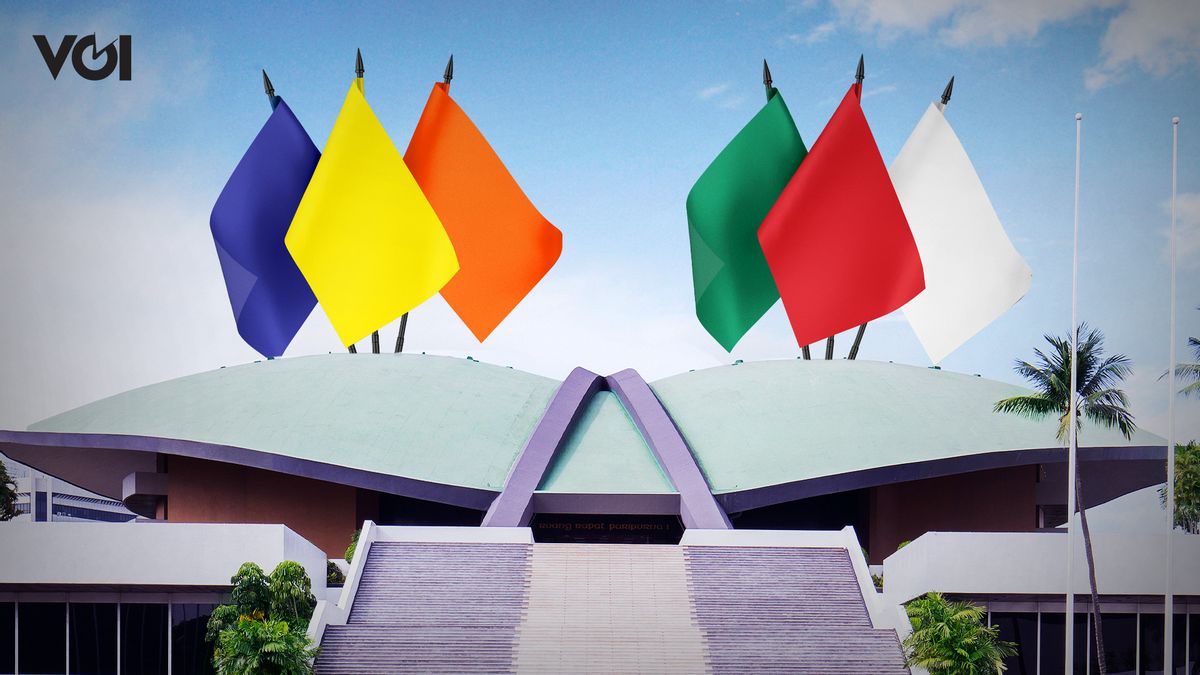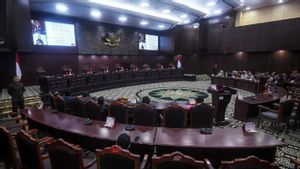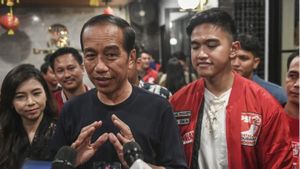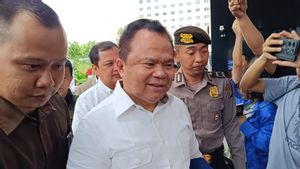JAKARTA The term parliamentary threshold (PT) or parliamentary threshold has again become a topic of discussion. The reason is the decision of the Constitutional Court (MK) Number 116/PUU-XXI/2023 concerning changes to the amount of the palm oil threshold in the 2029 election.
In its decision, the Constitutional Court considers that the provisions of the parliamentary threshold of 4 percent of the national valid votes regulated in Law Number 7 of 2017 concerning Elections are not in line with the principles of people's sovereignty, election justice, and violate legal certainty guaranteed by the constitution.
For this reason, the parliamentary threshold is constitutional as long as it remains valid in the 2024 DPR elections and conditional constitutionality to be applied in the 2029 DPR elections and subsequent elections.
"Granted the Petitioner's petition in part. To declare that the norms of Article 414 paragraph (1) of Law Number 7 of 2017 concerning General Elections are constitutional as long as they remain valid for the 2024 DPR Election and conditional constitutional to be enforced in the 2029 DPR Election and the next election as long as there has been a change to the parliamentary threshold norm and the number or percentage of parliamentary thresholds are guided by the predetermined requirements," said Chief Justice of the Constitutional Court Suhartoyo while reading the Amar Decision, Thursday, February 29, 2024.
PT or parliamentary threshold is a minimum requirement for vote acquisition so that a political party can be included in determining seats in the DPR and DPRD. Quoted from the LIPI Political Research Journal entitled Simplification of Political Parties Through Parliamentary Threshold: Systematic Violation of People's Sovereignty (2019), the reason for implementing the parliamentary threshold is to simplify the number of political parties in Indonesia which are considered to have been too much.
VOIR éGALEMENT:
If it is traced back, actually the implementation of PT or parliamentary threshold is not new, although it often changes. The forerunner of PT or parliamentary threshold has begun in the 1999 elections. The difference is that in the first election, the reform era implemented an electoral threshold system for election participation or electoral threshold (ET) based on parliamentary seats.
This means that political parties participating in the 1999 Election can participate in the 2004 General Election if they have at least 2 percent of the DPR seats or at least 3 percent of the provincial DPRD seats or district/city DPRD, which are spread over half the province and half of the district/city.
The 2004 election increased the threshold for the next election participation to 3 percent of the DPR seats or at least 4 percent of the provincial DPRD seats or district/city DPRD, which are spread across half the province and half of the district/city.
Ahead of the 2009 General Election, the rules changed again. In discussing the Draft Election Law, the Special Committee (Pansus) agreed to change the provisions of the electoral threshold to a parliamentary threshold.
Implementation Of PT Or Threshold Parliament
Member of the Special Committee for the Election Bill (after being ratified into Law No. 10/2008 on Elections), Ali Masykur Musa said, the change from ET to PT was agreed because the Special Committee assessed that ET was not effective in selecting existing political parties for the realization of a simple multiparty system in Indonesia.
"Our hope at that time was to realize a simple multiparty system. In addition to the efficiency of election implementation costs, the effectiveness of parliamentary performance is also expected to increase," he said, Monday, March 4, 2024.
Cak Ali, Ali Masykur's nickname, revealed that at that time the Special Committee reviewed several examples of the implementation of PT or parliamentary thresholds in various countries, especially in Asia. From the data obtained by the Special Committee, the average number of PT in Asian countries is 3 to 5 percent.
Even in other regions, Europe and Africa have an average of 5 percent. Meanwhile, in North and South America, the average is 3 percent," he added.
Therefore, after receiving input from various parties, the Special Committee agreed to implement PT or parliamentary thresholds with a gradual figure, which is expected to reach 5 to 7 percent to create a simple multiparty system.
"Our hope is that in the Special Committee, if there are political parties that do not pass PT or the parliamentary threshold, they can merge if they have the same vision. So voters or voters will also not be confused by the number of political parties with the same platform. But indeed we (Pansus) admit that everything depends on the awareness of each political party that does not pass, "concluded Cak Ali.
The rules of PT or parliamentary thresholds were finally first applied in the 2009 elections. At that time, the condition for a political party to get a seat in the DPR was to obtain at least 2.5 percent of the total national votes. This is stated in Article 202 of Law Number 10 of 2008. However, the parliamentary threshold regulation in 2009 did not apply to the seats of provincial and district/city DPRDs.
PT rules or parliamentary thresholds are again enforced in the 2014 elections. Article 208 of Law Number 8 of 2012 stipulates a higher limit for vote acquisition, which is 3.5 percent of the total national vote, as a condition for a political party to obtain seats in the DPR.
Apart from the DPR, the parliamentary threshold in the 2014 election has also begun to apply the Provincial DPRD and Regency/City DPRD. However, the Constitutional Court decided that the parliamentary threshold of 3.5 percent would not apply nationally and only apply to the DPR.
In the 2019 Election, Articles 414 and 415 of Law Number 7 of 2017 stipulate that a political party must get at least 4 percent of the total national votes to be able to get seats in the DPR.
Hope for hope. The reason is, the performance of PT or parliamentary thresholds which will be implemented in the 2009 elections with the aim of creating a simple multiparty system to go up and down.
In the 2009 election which was attended by 38 political parties, only nine parties managed to pass the parliamentary threshold of 2.5 percent, namely the Democratic Party, Golkar Party, PDI Perjuangan, PKS, PAN, PKB, PPP, Gerindra Party, and Hanura Party.
In the 2014 election which was attended by 12 political parties with an amount of 3.5 percent, the political parties that passed increased to ten, namely the PDI-P, the Golkar Party, the Gerindra Party, the Democratic Party, PKB, PAN, PKS, the NasDem Party, PPP, and the Hanura Party.
This is certainly contrary to the initial intention of implementing PT or parliamentary thresholds. Because, in the 2009 and 2014 elections there was an increase in the number of political parties that passed to parliament even though the parliamentary threshold had increased.
In the 2019 election, the amount of PT or parliamentary threshold was increased to 4 percent. With this condition, the parties that succeeded in fulfilling the parliamentary threshold were 9 political parties, out of 16 parties participating in the 2019 Election. The nine political parties that met the 4 percent parliamentary threshold were PDI Perjuangan, Golkar, Gerindra Party, PKB, NasDem Party, PKS, Democratic Party, PAN, and PPP.
Simple Multiparty For Healthy Democracy
Deputy Chairperson of the NasDem Party DPP, Ahmad Ali, believes that his party considers the PT or the 7 percent parliamentary threshold to be the ideal number of political parties and strengthen the presidential system.
"If PT or parliamentary thresholds are not limited, it is possible for people to do business by establishing political parties with a capital of IDR 50 billion for political'sales'. That is what we must avoid for the sake of the health of Indonesia's democracy in the future," he said.
Meanwhile, according to the Lecturer of Government Science at Sam Ratulangi University, Daud M. Liando, the number of political parties in Indonesia should be limited and simplified. He considered that what was applied in the New Order era was actually ideal for elections in Indonesia.
"Unfortunately, this changed when it entered the reform era, where a number of parties considered the policies taken by the New Order to be wrong. After that, people tried to establish many parties because they were considered as more democratic parties," he explained.
In fact, continued Daud, it turns out that the more political parties become one of the obstacles to the state because it makes it difficult to supervise them. We also find it difficult to see which political parties are committed and have good quality," he added.
He stated that the number of political parties made it difficult for them to find people to get involved in politics. Especially to fulfill their membership and management. Even though the person should be looking for a party, now the party is looking for people. This is because there are too many parties and we have deviated from commitments," said Daud.
He emphasized that without a simple multiparty system, there would continue to be a merger or coalition in its political practice. The merger or coalition could actually weaken political parties because of the bargaining position. The more political parties the more interests. The more interests the more difficult it is, the more difficult it is for the government to take policy because it must compromise with political parties," concluded Daud.
The English, Chinese, Japanese, Arabic, and French versions are automatically generated by the AI. So there may still be inaccuracies in translating, please always see Indonesian as our main language. (system supported by DigitalSiber.id)
















